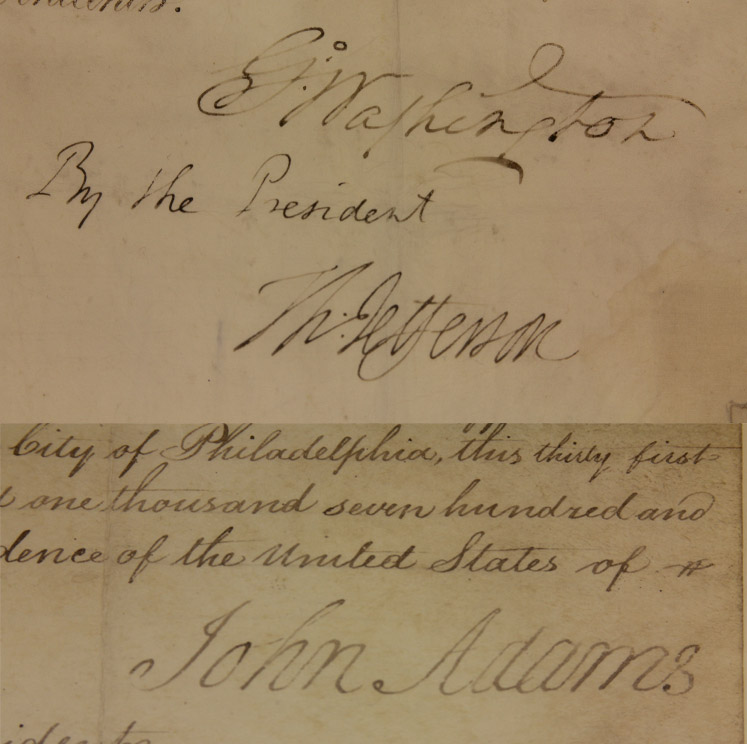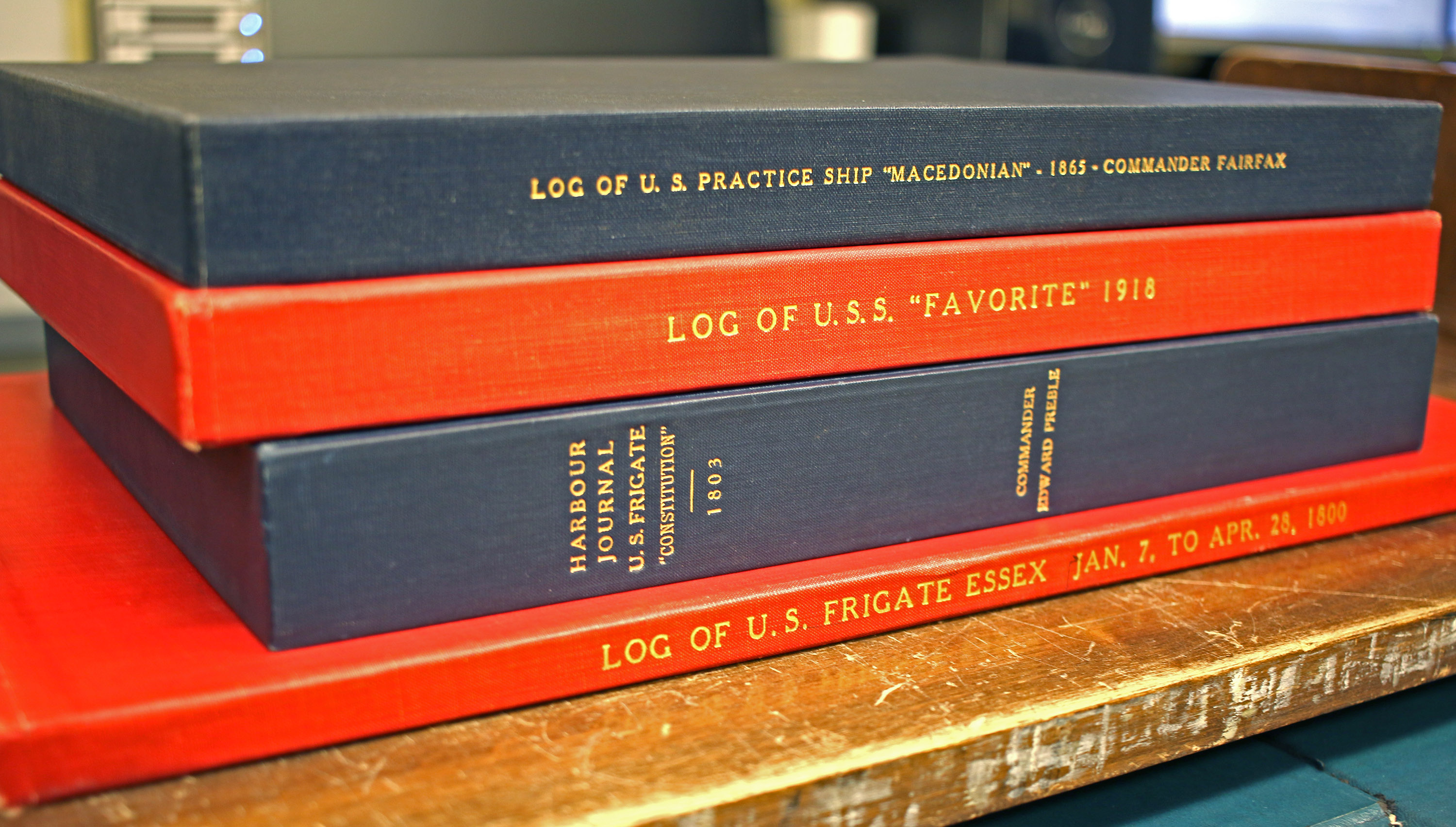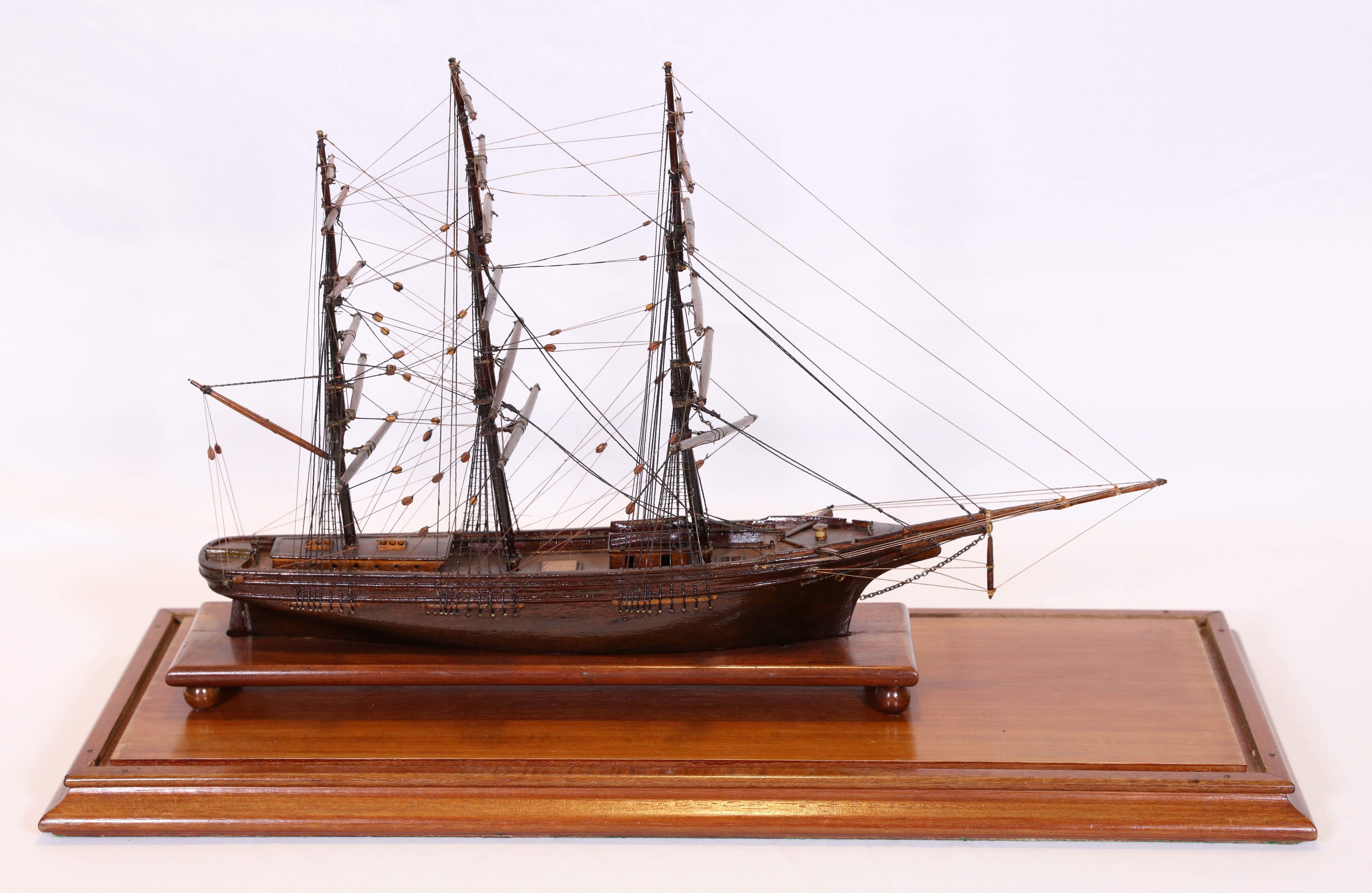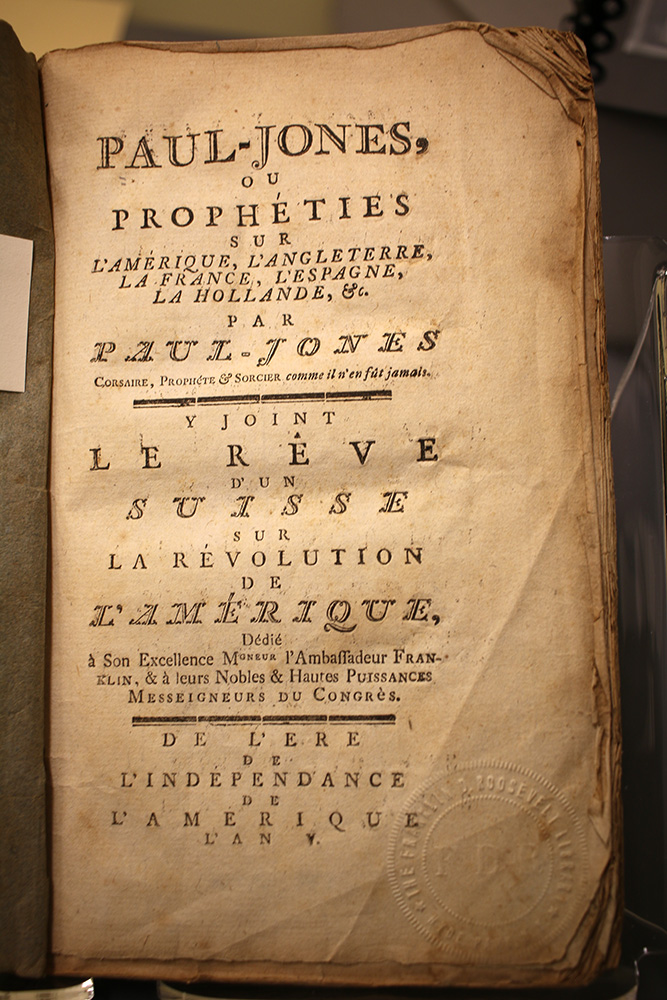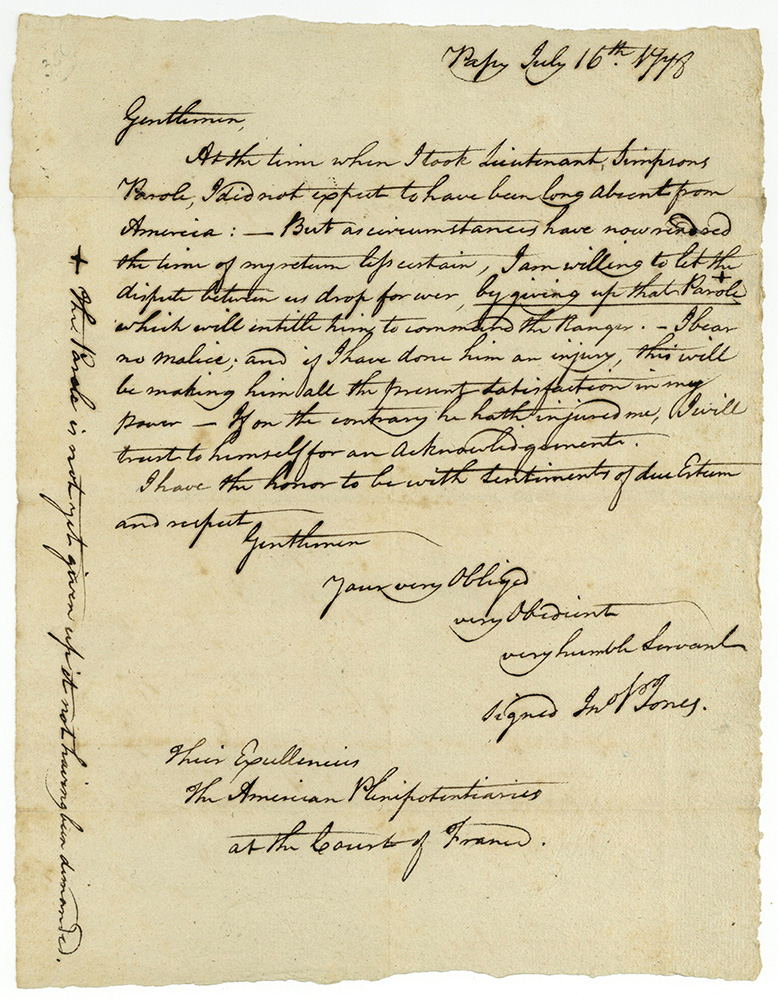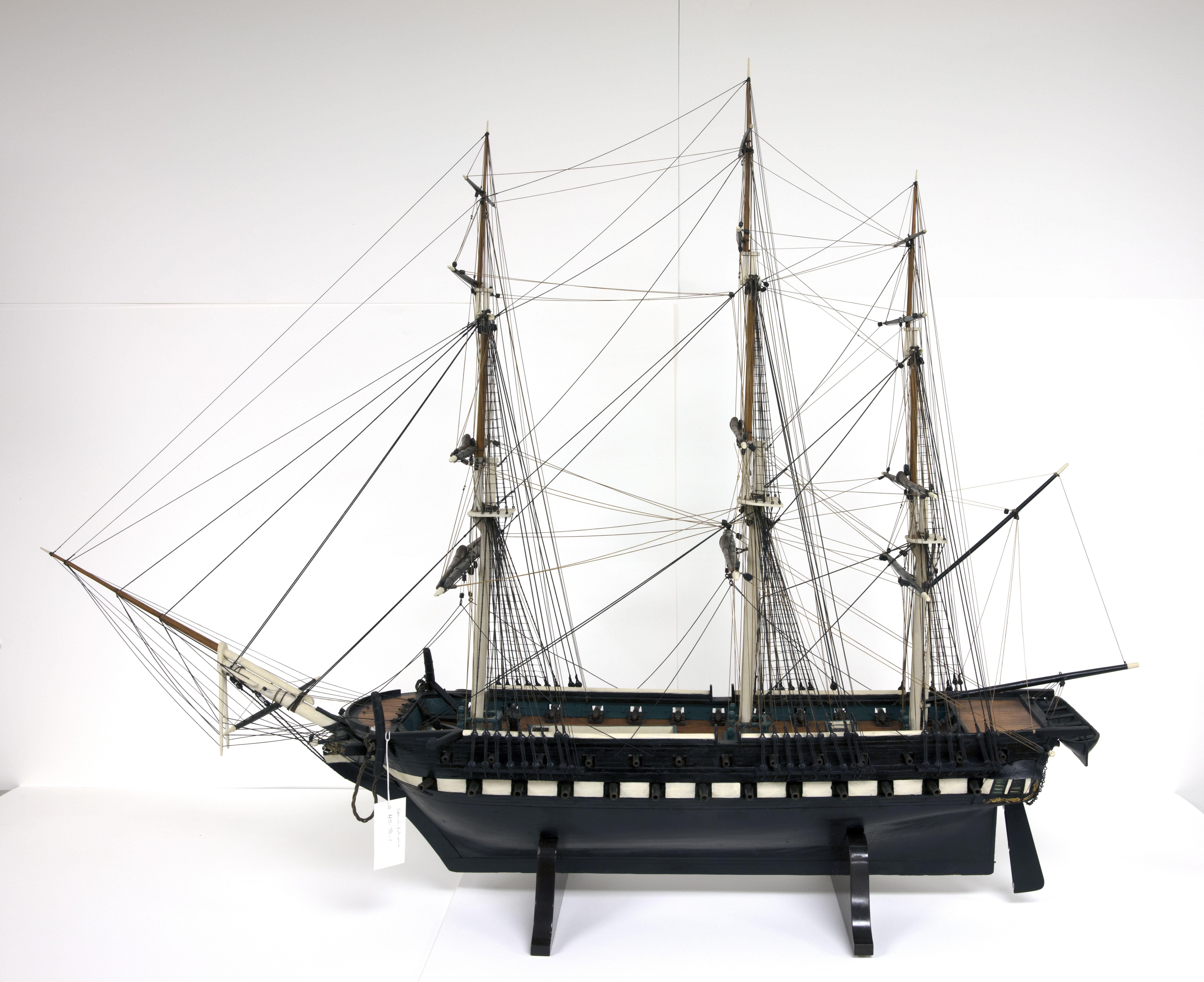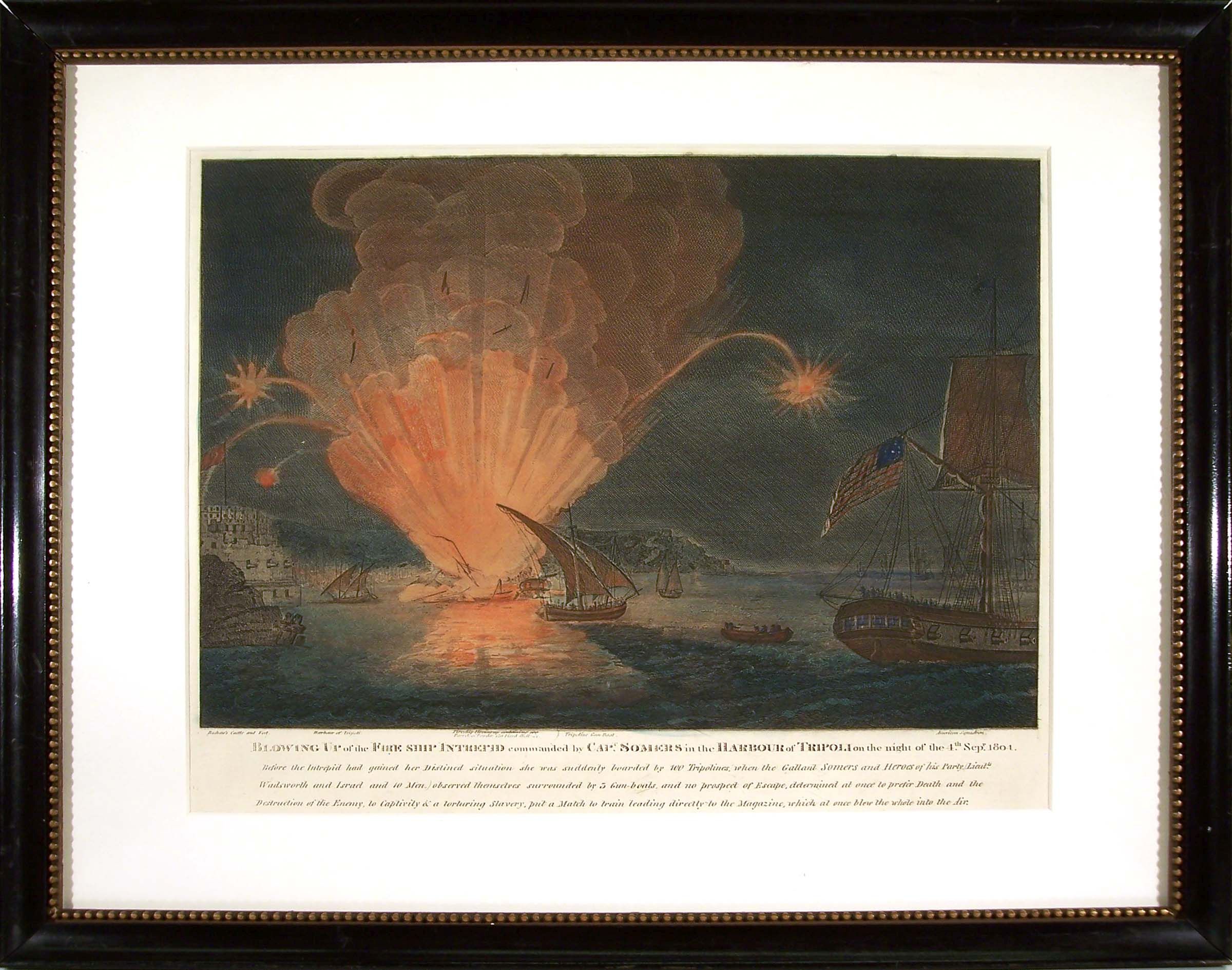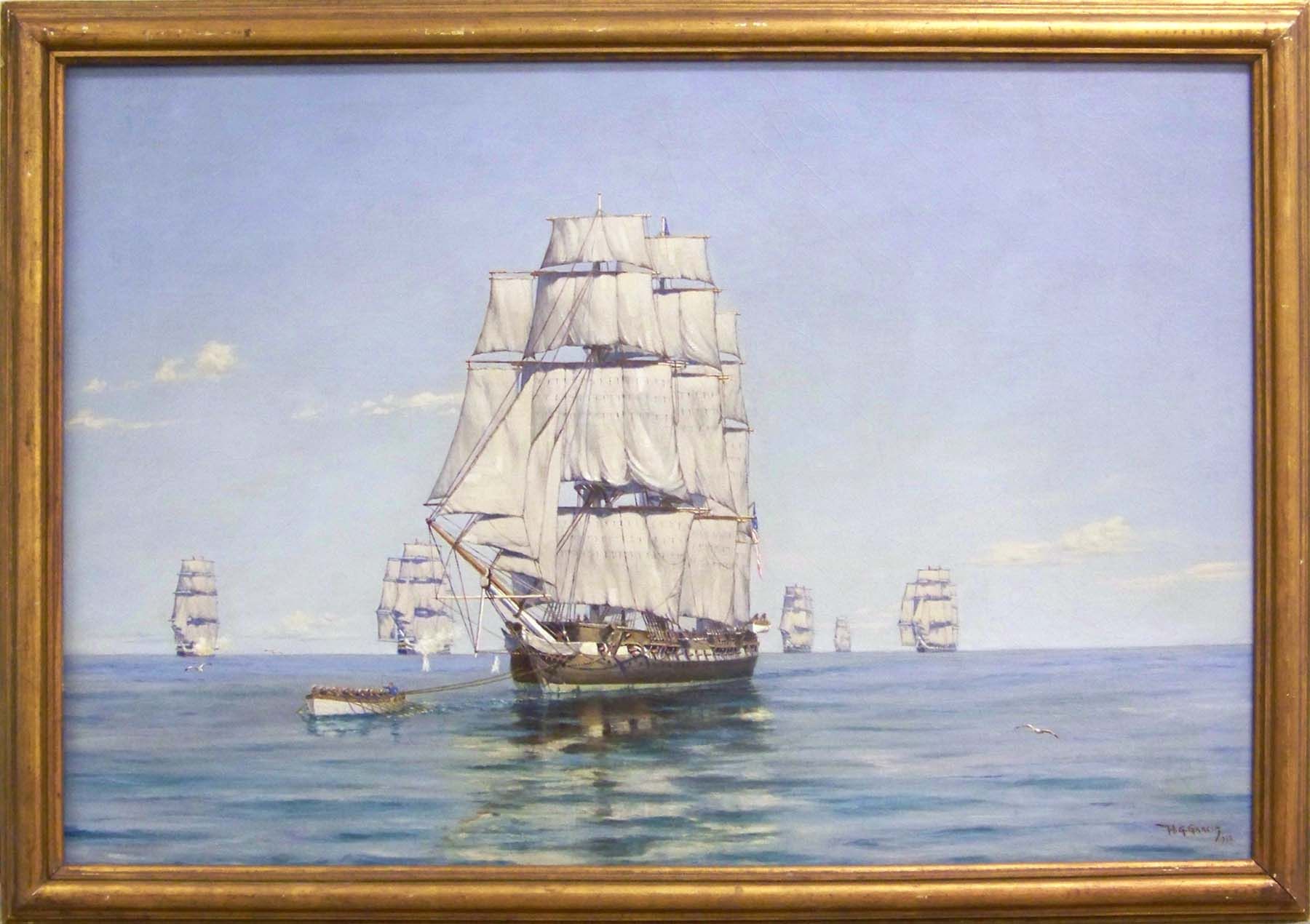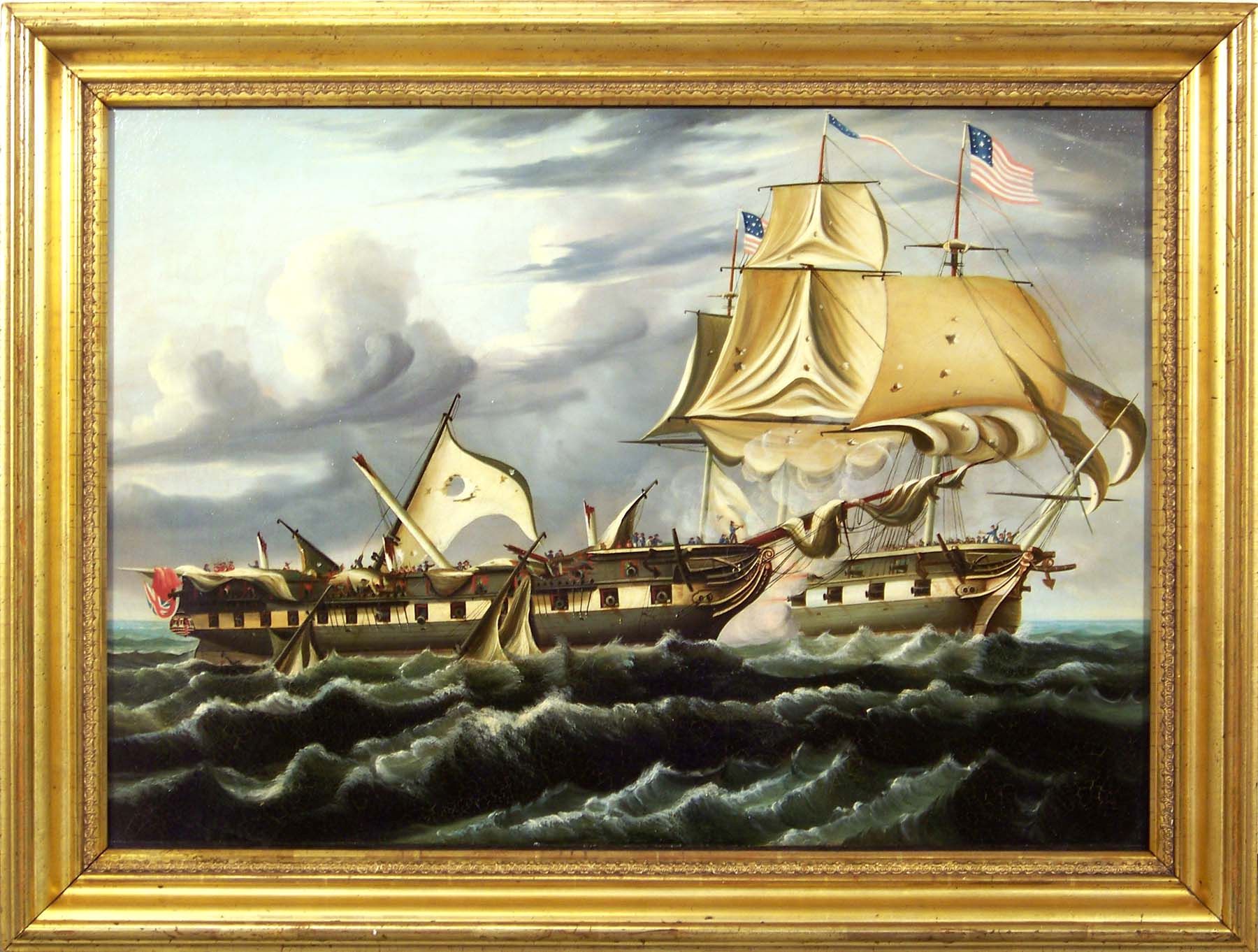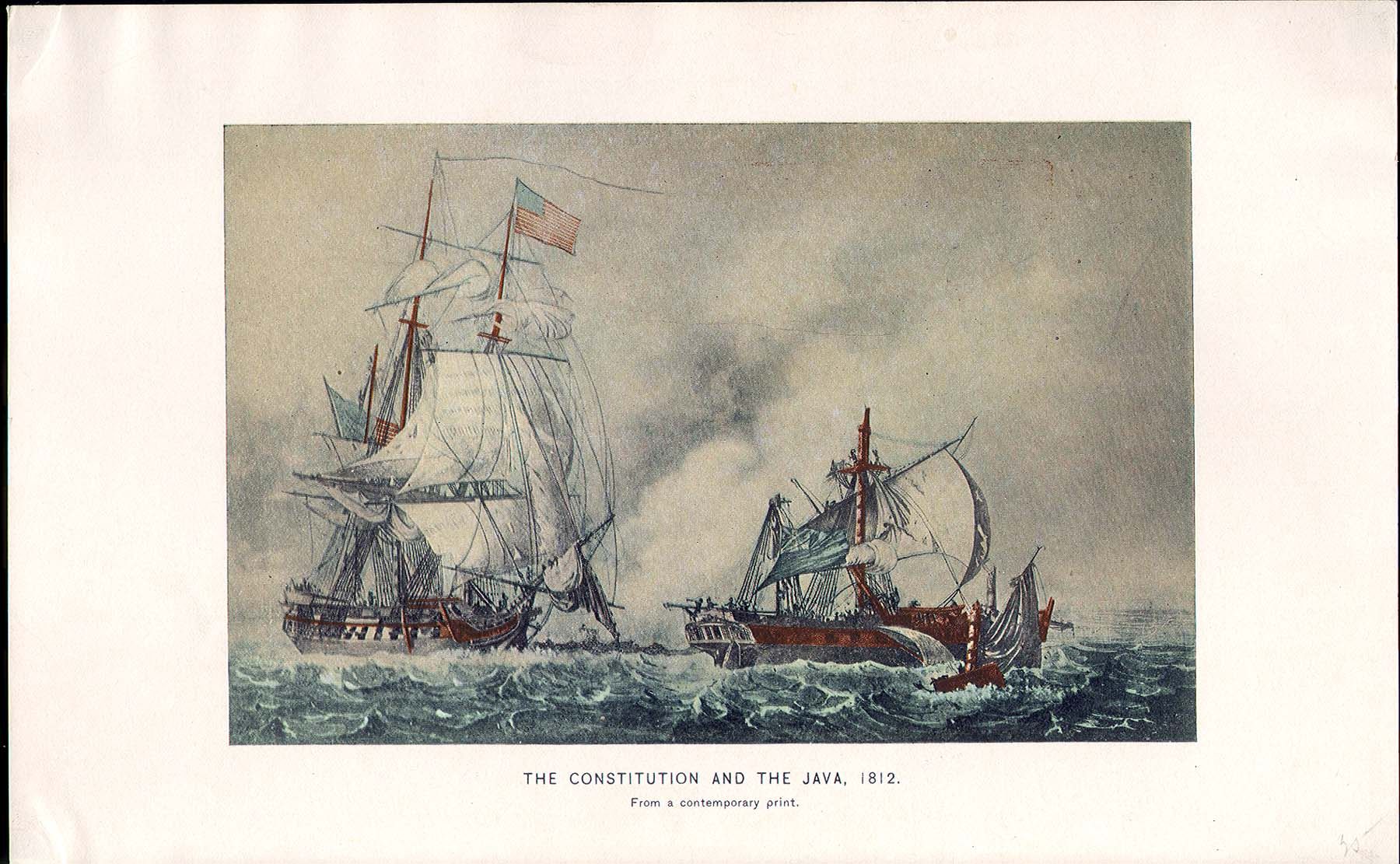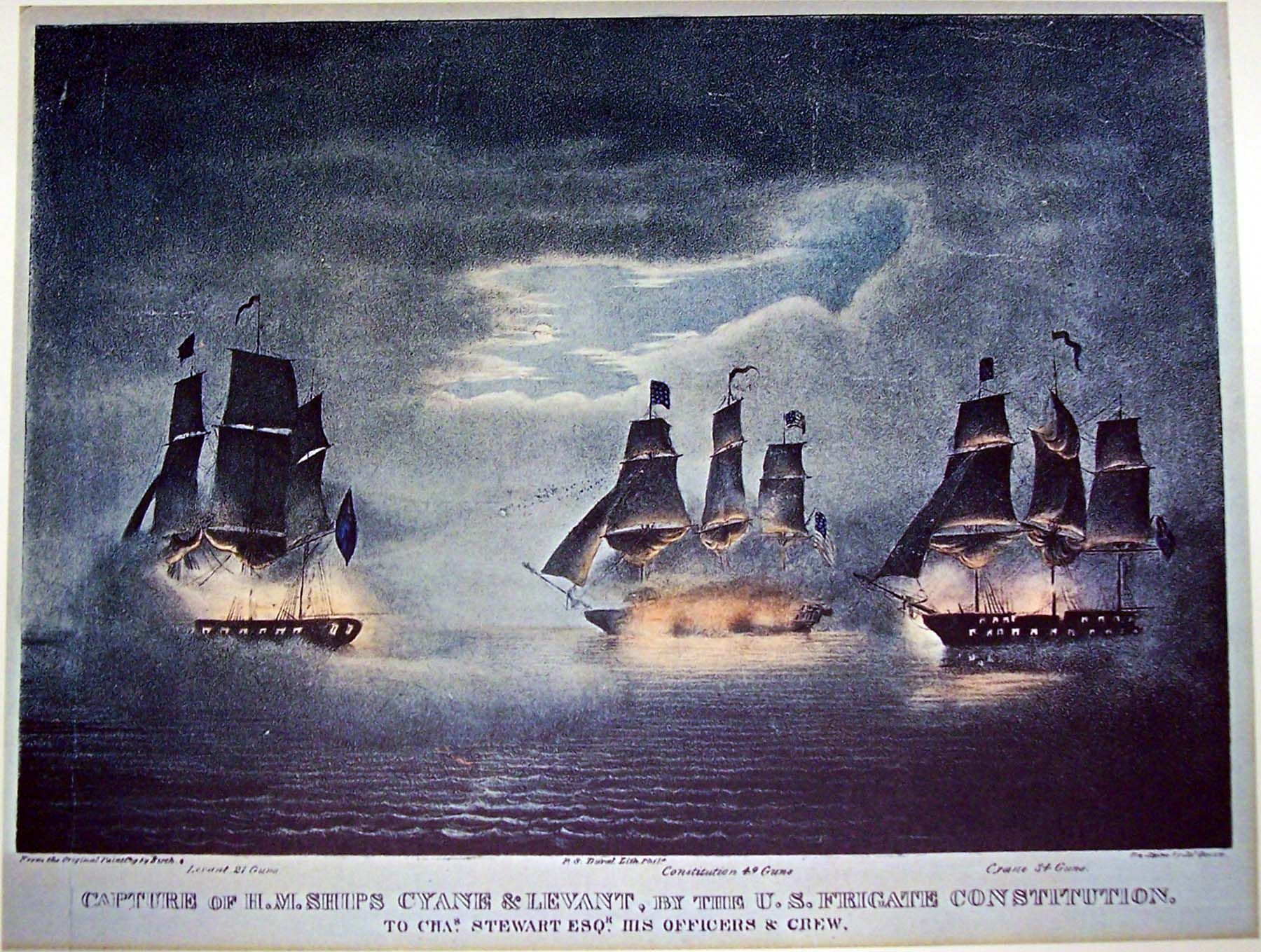 תצוגת תוכן אינטרנט
תצוגת תוכן אינטרנט
A Hidden Treasure: Franklin Roosevelt’s Naval Manuscript Collection
Franklin Roosevelt was a world-class collector famous for his stamps, ship models, naval art and books. But hidden in the deepest alcoves at the FDR Presidential Library and Museum is a remarkable, little known, and priceless collection that Roosevelt spent a lifetime acquiring. FDR called it his “Naval Manuscript Collection” but that does not do it justice. It is one of the largest private archives of rare documents on U.S. maritime history and the adventures and voyages of its greatest heroes.
 פורטלטים מקוננים
פורטלטים מקוננים
 תצוגת תוכן אינטרנט
תצוגת תוכן אינטרנט
A brief overview gives some sense of the scope of this hidden treasure – an estimated 72,000 pages dating from 1730 to 1942. There are letters, diaries, journals, manifests, and logbooks. There are papers from 27 Secretaries of the Navy and 10 Presidents, including Washington, Adams, Madison, Monroe, and Jackson.
The 40 log-books, daily journals kept by a ship’s officers, are from celebrated ships including the USS Constitution, the USS Essex, the USS Philadelphia, and even the HMS Lusitania.
 תצוגת תוכן אינטרנט
תצוגת תוכן אינטרנט
This collection is the end result of FDR’s insatiable appetite for all things nautical, his deep interest in naval strategy, and his passion for collecting. These fragile slips of paper, referred to as “items,” represent people, battles, and expeditions that are also referenced in his renowned assemblage of models, books and prints.
 תצוגת תוכן אינטרנט
תצוגת תוכן אינטרנט
A close examination reveals FDR’s intimate knowledge of the history of the U.S. Navy, global exploration, and the projection of power through mighty ships captained by extraordinary men. The heart of the material comes from the era of the great wind-powered, multi-mast vessels (1770-1865.) Looking back at the money and time spent assembling this trove one wonders – What drove him to assemble this truly noteworthy collection?
The strategic expertise FDR gained from a lifetime studying these manuscripts proved valuable when he wore the mantle of Commander-in-Chief waging a World War of unprecedented scope. It may also have given him his uncanny ability to select outstanding military leaders and guide them to victory. Perhaps his objective was greater than himself, perhaps he sought to create something of true historical significance that he could preserve for future generations.
 פורטלטים מקוננים
פורטלטים מקוננים
 תצוגת תוכן אינטרנט
תצוגת תוכן אינטרנט
As a young boy FDR was enthralled by his grandfather Warren Delano’s seagoing sagas and his family’s rich history of whaling and ship building. His mother Sara’s distant relative, Amasa Delano, wrote a book about his voyages around the world in 1817. Sara herself traveled to China as a child aboard a mighty clipper ship, the Surprise, while her father rebuilt his opium trading empire.
 תצוגת תוכן אינטרנט
תצוגת תוכן אינטרנט
Young Franklin was particularly inspired by the swashbuckling encounters of Captain John Paul Jones during the Revolutionary War. FDR collected more than 50 books about Jones, including a 1781 biography in French, the first to be published. There are 32 items in the John Paul Jones file, including his letter to “Their Excellencies the American Plenipotentiaries…” seeking to end his dispute with a former Lieutenant. Capt. Jones terrorized the British coastline most notably aboard the USS Bonhomme Richard while based in France.
(Next to each person, ship or organization’s name I will note the number of items related to them in the collection.)
 פורטלטים מקוננים
פורטלטים מקוננים
 תצוגת תוכן אינטרנט
תצוגת תוכן אינטרנט
As war with the British Empire loomed in the 1770s, the Continental Congress (28 items) authorized a number of captains to become privateers (basically sanctioned pirates) to harass the British merchant ships, and then commissioned several captains to protect vital American ports. This small hodgepodge fleet known as the Continental Navy had little success against His Majesty’s mighty Royal Navy but it laid the foundation for what would soon become the U.S. Navy.
 תצוגת תוכן אינטרנט
תצוגת תוכן אינטרנט
 תצוגת תוכן אינטרנט
תצוגת תוכן אינטרנט
“That five ships of thirty-two guns, five of twenty-eight guns, three of twenty-four guns, making in the whole thirteen, can be fitted for the sea probably by the last of March next, viz. in New Hampshire one, in Massachusetts Bay two, in Rhode Island two, in Connecticut one, in New York two, in Pensylvania (sic) four, and in Maryland one.”
 פורטלטים מקוננים
פורטלטים מקוננים
 תצוגת תוכן אינטרנט
תצוגת תוכן אינטרנט
“I want to be further instructed, what ships, Brigantines schooners &c are to be found in any Part of the Province, which are to be sold or hired out, which will be suitable for armed Vessells - What Their Tonnage the Depth of Water they draw, their Breadth, their Decks &c, and to whom they belong. and what is their Age.”
 פורטלטים מקוננים
פורטלטים מקוננים
 תצוגת תוכן אינטרנט
תצוגת תוכן אינטרנט
After independence American leaders realized the fledgling United States needed a deep-water navy to compete on the global stage. This led President George Washington (3 items) to pass the Naval Act of 1794 which led to the creation of the U.S. Navy. Six frigates were ordered, the most famous of course the USS Constitution (two items), which miraculously still sails and is anchored in Boston Harbor.
 פורטלטים מקוננים
פורטלטים מקוננים
 תצוגת תוכן אינטרנט
תצוגת תוכן אינטרנט
The USS Constitution was without a doubt FDR’s favorite ship and it can be used to chart a course through the many people, some famous - most obscure, whose signatures can be found within these portfolios.
This model of the Constitution held special significance for FDR and he kept it in his White House study while he was president. Roosevelt’s love of maritime history inspired him to collect across multiple formats, he owned several models of the USS Constitution and at least a 74 prints and illustrations featuring it.
 פורטלטים מקוננים
פורטלטים מקוננים
 תצוגת תוכן אינטרנט
תצוגת תוכן אינטרנט
A brief review of this ship’s most famous missions explains why FDR treasured her so much. Built in 1794-95 by Joshua Humphrey (48 items) it was constructed under the watch of Captain Samuel Nicholson (3 items) in a radical new way giving it great strength and speed. It was armed with up to 50 cannons. When the USS Constitution was launched in 1797 President John Adams (5 items) presided.
 תצוגת תוכן אינטרנט
תצוגת תוכן אינטרנט
The Constitution saw its first action on September 8, 1798, during the Quasi-War with France, when Capt. Nicholson captured the 24-gun Niger with its French crew as a prize. In the summer of 1799, Silas Talbot (6 items) took command with Isaac Hull his 1st Lieutenant (11 items – more on him later). They patrolled the West Indies and harassed French merchant ships, eventually returning to Boston for repairs.
On August 14, 1803, the Constitution set sail under the command of Capt. Edward Preble (3 items). She was his flagship as the American fleet did battle with the Barbary Pirates along the coast of North Africa. The pirates hailed from Algiers, Tripoli, Benghazi, and other notorious ports. They were ferocious fighters, skilled sailors, and brutal captors. One of the more interesting letters in the collection is from Capt. Preble on Oct. 12, 1803, in Tangiers to Capt. John Rodgers declaring “Peace between the US and Morocco.” It was Capt. Preble’s first victory but not his last.
 פורטלטים מקוננים
פורטלטים מקוננים
 תצוגת תוכן אינטרנט
תצוגת תוכן אינטרנט
On October 31, the USS Philadelphia ran aground in Tripoli Harbor under Capt. Bainbridge (11 items) and he and his crew were taken captive. Capt. Preble ordered Capt. Stephen Decatur (17 items) to take a small boarding party of Marines and burn the Philadelphia in a spectacularly daring raid. In August of 1804, the Constitution and a fleet of ships attacked Tripoli Harbor sinking a number of Tripolitan gunboats.
 תצוגת תוכן אינטרנט
תצוגת תוכן אינטרנט
 תצוגת תוכן אינטרנט
תצוגת תוכן אינטרנט
The war went on for months and in November of 1804 Capt. John Rodgers (15 items) took command. Rodgers eventually forced a peace treaty with the pirates which was signed on the deck of the Constitution. This first foreign victory for the U.S. Navy is immortalized in the Marine Anthem - “From the halls of Montezuma to the shores of Tripoli.” Rodgers turned over command to Capt. Hugh Campbell (2 items) on May 29th, 1806. But the Constitution’s greatest victory lay ahead, during the War of 1812.
On July 12, 1812, less than a month after war was declared with Great Britain, the Constitution embarked on her most famous adventure. At the helm was Capt. Isaac Hull (who had served previously under Capt. Talbot.) Five days out Capt. Hull encountered a British squadron of ships just south of New York. They immediately gave chase and Hull was forced to flee. The HMS Guerriere, a 38-gun frigate, was closest to the Constitution and was soon gaining on it. Then the winds suddenly died down and the Constitution was becalmed. Hull ordered his crew to man the boats and tow the Constitution away from her pursuing predators. Hull was able to escape to Boston but the two ships were destined to meet again.
 תצוגת תוכן אינטרנט
תצוגת תוכן אינטרנט
 תצוגת תוכן אינטרנט
תצוגת תוכן אינטרנט
The great battle took place on August 19th, as the Guerriere was heading north to Nova Scotia. When Hull spotted the British frigate sailing alone, he gave chase. This is one of FDR’s favorite naval battles and he has many prints and paintings depicting this epic encounter.
As the two ships exchanged cannon fire one of the Guerriere’s shots bounced off the side of the Constitution – and a sailor exclaimed “HUZZAH! Her sides are made of iron!” The Constitution pulled alongside and both ships delivered blistering broadsides at point blank range. During the next 15 minutes Hull’s cannons inflicted massive damage to the Guerriere’s masts, while the Constitution’s thick hull withstood the cannon shot with little damage. Muskets were fired from both ships and sailors with sabers drawn prepared to board. Strong currents pulled the two ships apart and with a roaring crash the Guerriere’s main mast fell into the water. The Constitution fired another broadside and the British captain, shocked at being defeated by an American, surrendered.
 תצוגת תוכן אינטרנט
תצוגת תוכן אינטרנט
 תצוגת תוכן אינטרנט
תצוגת תוכן אינטרנט
Many men died, many more grievously injured, but it was a great victory for the nascent U.S. Navy – and a legend was born – the legend of “Old Ironsides.” Capt. Hull returned to Boston to great acclaim. In London the battle was considered a scandalous defeat.
Captain Bainbridge, who had endured years of captivity at the hands of the Barbary Pirates, assumed command of the Constitution on September 8, 1812. On December 29th he engaged in another historic battle, this time with the HMS Java near San Salvador off the coast of Brazil. The Java was a powerful 46 gun frigate and the two ships traded broadsides, with the Java’s masts and rigging badly damaged and the Constitution losing its rudder. Capt. Bainbridge was severely injured but refused to give up command. During three hours of battle the Java’s main mast fell, her captain was killed and more than 100 men were wounded or died. Unable to maneuver the Java surrendered.
 תצוגת תוכן אינטרנט
תצוגת תוכן אינטרנט
 תצוגת תוכן אינטרנט
תצוגת תוכן אינטרנט
The Constitution returned triumphantly to Boston and underwent extensive repairs before returning to sea under Capt. Charles Stewart (4 items.) Stewart returned to the South Atlantic and in a remarkable feat managed to capture two British warships, the HMS Cyane and the HMS Levant, in the same battle and was later awarded the Congressional Gold Medal for his triumph.
One of the true jewels in the collection is the logbook for the USS Constitution from 1813-1815 while Capt. Stewart was in command. The logbook is encased in a beautifully embossed box which indicates it was a gift from VA – undoubtedly Vincent Astor the heir to the Astor fortune, a good friend of FDR and a fellow naval enthusiast.
 פורטלטים מקוננים
פורטלטים מקוננים
 פורטלטים מקוננים
פורטלטים מקוננים
 תצוגת תוכן אינטרנט
תצוגת תוכן אינטרנט
The entry from Christmas Eve, 1814 describes coming upon the British brig Lord Nelson and taking her as a prize, then using her stores to prepare a grand Christmas dinner for the crew. There are also vivid descriptions of the battle with the Cyane and Levant on February 15, 1815, just before the war officially ended.
 תצוגת תוכן אינטרנט
תצוגת תוכן אינטרנט
 תצוגת תוכן אינטרנט
תצוגת תוכן אינטרנט
Stewart returned to Boston and the USS Constitution was heralded for her undefeated record and extraordinary accomplishments. Though she returned to the sea under three different Captains - Jacob Jones (4 items), Thomas Macdonough (2 items), and Daniel Patterson (4 items) -she saw no real action and was formally put into reserve in July 1828. Rumors spread that the Constitution was to be put to scrap but in 1830 Oliver Wendell Holmes wrote an inspiring poem, “Old Ironsides,” which galvanized public opinion and the Constitution was preserved. In the following years she undertook numerous diplomatic and ceremonial voyages around the world and became a training ship for the U.S. Navy. In 1940, under the orders of President Roosevelt, the USS Constitution was recommissioned once again. She is now the oldest commissioned ship in the world still afloat.
A Passion for Preservation
The items described here barely scratch the surface of the vast trove of documents contained in this collection. Following a similar pathway for the Battle of Lake Erie in 1813 you can find dozens of items. There are also hundreds of documents related to the Civil War, scientific explorations, the Mexican American war and other events. Further examination might provide the basis for new or revised scholarly work about naval history.
So why did FDR spend so much time and money acquiring this enormous cache of rare naval documents? Partly to satisfy his passion for naval history and his insatiable appetite for collecting things. He also wanted to preserve these relics of the past for future generations. These precious parchments offered FDR a tactile link to America’s seafaring past – the swashbuckling privateers and the freedom fighting patriots who stood at the helm through tempests and hurricanes, who braved cannon fire and mutiny to defend our nation and explore the world.
Organizing this collection was one of the hobbies FDR hoped to return to when he finally left the White House – which is why he had them stored at his presidential library. After 75 years, this collection remains little known and deserves re-examination and further study. It is worthy of broader promotion as an important source for naval history. It is also a fascinating glimpse into FDR’s passion for collecting and preserving all aspects of American Naval History.
Transcriptions of some of the documents can be found here - https://www.history.navy.mil/research/publications/publications-by-subject/naval-documents-of-the-american-revolution.html - the Naval Documents of the American Revolution. FDR's collection was just one among the many repositories used in this important multi-volume series (currently covering 1775 to 1778.)
To date essentially nothing has been digitized, and to do so would require raising significant private funds. If this article helps raise awareness perhaps it can also help find financial support.
The mission of the National Archives and the FDR Library and Museum is to “drive openness, cultivate public participation, and strengthen our nation’s democracy through public access to high-value records.” We seek to “Make Access Happen” by inviting any historian or scholar to come and explore this remarkable resource. Help us better understand what treasures FDR buried here. History awaits you.
More Information
The library’s finding aid for FDR’s naval manuscripts can be found here:
https://www.fdrlibrary.org/
And a pdf of the finding aid for another smaller collection of FDR’s historical manuscripts, with an overview of the collection, can be found here:
https://www.fdrlibrary.org/




